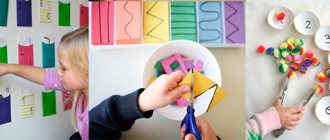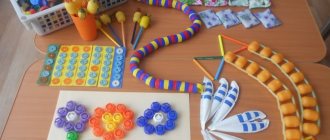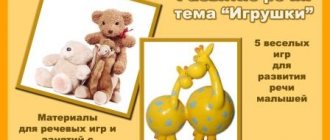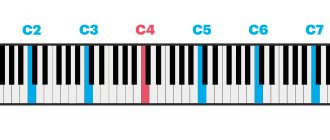The difference between onomatopoeic words and interjections
Separately, it should be noted the difference between onomatopoeic words and interjections. Despite the external similarity, these are not the same thing: the first transmit sound, the second convey emotions.
Examples of interjections:
- The meaningful “Shh” is, without a doubt, a request to remain silent.
- “Wow, great!” - joy and delight are obvious.
- “Cool!”, “Blah blah blah” are fashionable forms of interjections in modern slang, saying “good, great,” or about something understandable or empty.
A separate group includes words that are both interjections and onomatopoeias. For example, “Gee-gee-gee” expresses laughter with its sound and at the same time conveys a feeling of joy and fun.
Kinds
Onomatopoeia is an important way for children to understand the world around them. Onomatopoeic words in Russian imitate:
- the cry of birds (crows: kar-kar, chickens: ko-ko-ko);
- animal voices (dogs: woof-woof, horses: yoke-go);
- the sound of musical instruments (balalaika: tren-dren, bell: dili-don);
- sounds of natural phenomena (rain: drip-drip, thunder: bang-bang);
- sounds made by people (coughing: cough-cough, walking: stomp-stomp).
All the variety of sounds that surround us can be represented in onomatopoeic words. And they will be clear to everyone without additional explanation!
Functions
The main role of onomatopoeic words is to repeat the sound.
For example, if we want to reproduce the sound of a flying mosquito, it will be “zzz”. And the ticking of a clock looks like “tick-tock.”
In addition, onomatopoeia is a way of creating an expressive effect. For example, compare:
- The dog is small. The puppy frolicked and yelped funny “yelp-yelp” at the flying butterflies.
- The dog is big. A huge dog sat at the gate and barked importantly “woof-woof” if someone passed by.
- The dog is angry. The dog bristled and growled “rrrr”, the cat was not afraid, but backed away.
- The dog is whining. Somewhere a dog whined pitifully “oooh”, bringing melancholy.
Here, onomatopoeic words convey shades and intonations of essentially one action. Agree, in each case a completely different animal with a certain set of emotions appears in the imagination.
Application
Sound imitation is widely used in many areas of human life.
In pedagogy
Imitation is one of the methods of producing sounds for poorly speaking children.
During classes with a speech therapist, such a child is asked to caw like a crow (carrr) or hiss like a snake (shhh). And also take part in games with the sound of certain actions: plop-plop (a pig is swimming in a puddle), boo-boo (a bear fell from a tree).
Imitating animal and nature sounds is especially helpful for babies. This way, they learn with pleasure and begin to speak faster.
In fiction
In literary works, the effect of sound presence is achieved with the help of onomatopoeia. Using words with hissing sounds, you can reproduce noise or rustling. Example: The whisper of rain was heard in the rustling leaves of the trees.
Also, onomatopoeic words can convey the emotional background of the scene being described, express the state of the hero and characters, and the sensations of the actions taking place.
The musicians came running, the drums started beating, Bom! Bom! Bom! Bom! A fly dances with a mosquito. And behind her is a bug, a bug, boots, stomp, stomp.
K. Chukovsky
Onomatopoeia gives a feeling of celebration, dancing, fun! Isn't it incendiary?
In folklore
Folk songs, poems, and nursery rhymes, which children love very much, are replete with onomatopoeic words.
Example: Bang bang! Oh oh oh! My little bunny is running away.
And here's another:
And the owls from the forest With their eyes: clap-clap! And the goat from the stable Nogami: stomp, stomp!
Onomatopoeia helps with figurative perception and is why children like it so much.
In colloquial vocabulary
In everyday speech, onomatopoeic words enhance the conveyed emotions and give expression to the conversation:
- I'm tired of your chatter!
- I called, but no response.
In advertising
Sound imitation expands perception, catches attention, attracting a potential buyer. And, most importantly, it is very well remembered: Bouillon cubes - glug-glug.
How to help a child?
Below are tips and advice for parents about the type of material children typically learn in school, as well as some ideas on how to help your child if they are struggling.
Keep it casual
Remember that the purpose of phonics is to help your child learn to read as quickly as possible so that he can read whatever he likes fluently! No one wants reading to become a chore, so learning should be playful, interesting and engaging.
Whatever stage of learning your child is at, do not forget:
- Phonics lessons should be short and focused. Try to stop before your child gets bored with homework! As a rule, this should be no more than 10 minutes.
- Make the learning process as fun as possible for the child, in a playful way.
- Choose a time to study when your child is not tired, and find a quiet place where he will not be distracted by the TV or noisy siblings.
- Even when your child has already learned to read on his own, continue to read books aloud to him! During this period, fairy tales and short stories, high-quality popular science literature, as well as pleasant, quiet time discussing what you have read are important!
- If you are concerned about your child’s poor progress, go to https://zvukibukvy.ru/, where a phonetic analysis of words is presented in all its diversity, or talk to the teacher. Share your concerns and ask for advice. This often helps and can be a great source of new ideas for supporting your child!
Features of onomatopoeia in Russian
Onomatopoeic words are characterized by:
- repetitions (bom-bom, ko-ko-ko), onomatopoeic words enhance the emotional impact;
- use as a separate noun (The loud tick-tock hurt the ears.);
- transformation into other parts of speech (laughter, laugh, laughing).
Thus, onomatopoeia conveys the atmosphere and creates an image. Let's try to talk about watches in different ways:
- The clock hung on the wall. Showed the exact time.
- The clock ticked rhythmically, a sunbeam played on the wall.
Which one do you prefer? To create an image and mood, onomatopoeic words are necessary.






